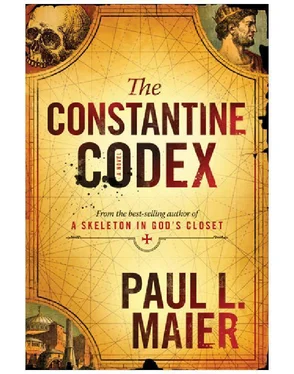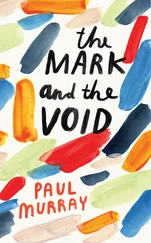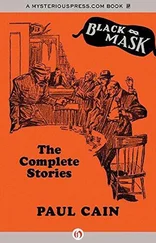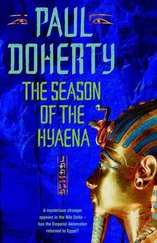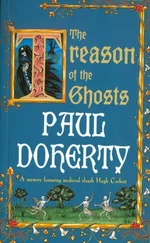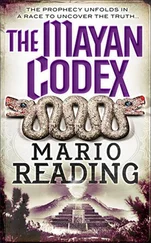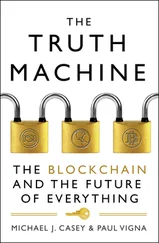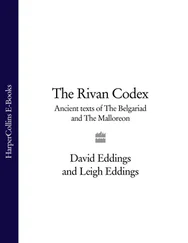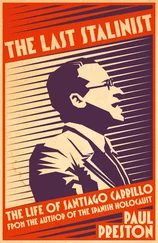Paul Maier - The Constantine Codex
Здесь есть возможность читать онлайн «Paul Maier - The Constantine Codex» весь текст электронной книги совершенно бесплатно (целиком полную версию без сокращений). В некоторых случаях можно слушать аудио, скачать через торрент в формате fb2 и присутствует краткое содержание. Жанр: Триллер, на английском языке. Описание произведения, (предисловие) а так же отзывы посетителей доступны на портале библиотеки ЛибКат.
- Название:The Constantine Codex
- Автор:
- Жанр:
- Год:неизвестен
- ISBN:нет данных
- Рейтинг книги:5 / 5. Голосов: 1
-
Избранное:Добавить в избранное
- Отзывы:
-
Ваша оценка:
- 100
- 1
- 2
- 3
- 4
- 5
The Constantine Codex: краткое содержание, описание и аннотация
Предлагаем к чтению аннотацию, описание, краткое содержание или предисловие (зависит от того, что написал сам автор книги «The Constantine Codex»). Если вы не нашли необходимую информацию о книге — напишите в комментариях, мы постараемся отыскать её.
The Constantine Codex — читать онлайн бесплатно полную книгу (весь текст) целиком
Ниже представлен текст книги, разбитый по страницам. Система сохранения места последней прочитанной страницы, позволяет с удобством читать онлайн бесплатно книгу «The Constantine Codex», без необходимости каждый раз заново искать на чём Вы остановились. Поставьте закладку, и сможете в любой момент перейти на страницу, на которой закончили чтение.
Интервал:
Закладка:
Perhaps the Prophet’s wives, then, would have to be off-limits. Again, though, how superior was the analogous situation in Jesus’ case, who had no multiple-wife problem whatever-in fact, no wife at all, despite recurring attempts among sensationalist authors to get Jesus married off to Mary Magdalene.
And finally there was the question of whether or not to bring up Muhammad’s fabled night journey from Mecca to Jerusalem. He claimed to have mounted a winged horselike creature and flown to Jerusalem, and thence to the seven heavens-all in one night. While in Jerusalem, he also claimed to have seen the Jewish Temple-a historical impossibility, since the temple had been destroyed by the Romans 550 years earlier. Even his beloved Aisha said that Muhammad was at home that night, and the whole thing was a vision. Since it was not mentioned in the Qur’an-only in the hadith, the traditions-Jon decided not to use it. After all, medieval Christianity also had its own collection of legends.
Other aspects of Jon’s preparation involved direct research, such as wandering into a local mosque and checking out its tract rack. Here there was plenty of free literature, including short biographies of Muhammad, guides to understanding Islam, excerpts from the Qur’an, as well as CDs and DVDs on Islam. Jon stocked up on this material and even left appropriate cash in a contribution box nearby.
What intrigued him the most, however, was a broad display sign across the whole width of the tract area with the words: ISLAM IS THE
WORLD’S FASTEST GROWING RELIGION FIND OUT WHY!
He had heard this claim so often in the secular press and even among Christians that he was intrigued enough to test it out. It took a bit of doing-more than simply checking Wikipedia.
The careful research of David Barrett, who had been tracking religious numbers for years, proved very helpful. Statistics in the World Christian Encyclopedia easily demonstrated that the banner over the tract rack in the mosque was quite mistaken and that the world’s fastest growing religion was, in fact, Christianity. With the southern hemisphere-Africa in particular-exploding for the faith, the conversion rate to Christianity was double that of conversion to Islam, and in some places, triple.
Even more compelling was evidence from Islam itself. Nearly by accident, Jon stumbled across comments by Ahmad al-Qataani, who was interviewed by Al Jazeera on December 12, 2006. Al-Qataani, leader of an organization advancing the science of Islamic law in Libya, stated, according to the translated Web transcript from Al Jazeera, “In every hour, 667 Muslims convert to Christianity. Every day, 16,000 Muslims convert, and every year, 6 million Muslims convert to Christianity. These numbers are very large indeed.”
Jon doubted, though, that there would be any value in using statistical claims in the debate, since numbers alone did not prove all that much. When the Christian church was founded on the Day of Pentecost, it numbered only some three thousand members.
Osman al-Ghazali proved very helpful in marshalling the most important arguments that Muslims use in defending their faith, and Jon found books by other Muslim converts to Christianity, such as by the Caner brothers, to be very helpful as well. The literature on Islam and Christianity was becoming a major genre in the publishing industry.
So, once again, it would be the Crescent versus the Cross, and the Cross versus the Crescent, Jon reflected. Would their forthcoming debate bring anything fresh to the table or become nothing more than a footnote in a fourteen-century face-off?
Two weeks before “the great debate,” Jon, Shannon, Richard Ferris, and Osman al-Ghazali were on a Turk Hava Yollari jet-Turkish Airlines flight 25 from JFK to Istanbul, a ten-hour odyssey. With a nod to American presidential election debates, they had already had a practice session at Harvard, in which al-Ghazali had presented Islam with such passion that Jon nearly thought he had returned to the teachings of the Prophet.
Jon had planned to use frequent flier miles to upgrade them all to business class, but Richard Ferris told him it was unnecessary. Although the ICO had made no fund appeal in any medium, financial gifts had poured into their Cambridge headquarters anyway. The American public was clearly sensitive to the world importance of this particular Muslim-Christian engagement.
Two members of Jon’s party did not have their expenses underwritten by the ICO. Instead, American taxpayers footed their bill, and no one was even supposed to know they had anything to do with Jon’s group. They were, of course, two agents from the CIA, one sitting by himself at the rearmost seat in business class on the left side of the plane, the other taking the same position on the right. Jon grinned as he noted their navy blue serge suits and ties. If they were supposed to look like tourists, wouldn’t khaki Dockers and sport shirts have been more appropriate?
The plane landed with an emphatic bump at Ataturk Havalimani, the international airport west of Istanbul. The Turkish morning was bright and hot as Jon’s party descended the lofty aluminum port-a-stairway from the front of the plane, a strong semisirocco blowing up from Africa to the south and sending swirls of dust into the air.
At passport control, a welcoming committee from the Turkish Ministry of Culture greeted them amiably, led by the dapper and amply mustachioed director himself, Adnan Yilmaz. He would be their liaison with the Turkish government throughout their visit. Once their baggage was in hand, he whisked them through the various gateways set up to screen out troublemakers. Curbside, he reminded them of the final planning meeting for the debate, to be held in three days at the U.S. consulate in Istanbul, then ushered them inside two black Mercedes limousines emblazoned with insignia from the Turkish government.
So far, so good, thought Shannon, who was torn between the thrill of finally visiting one of the most exotic cities on earth and the fear that somewhere in that vast metropolis of thirteen million, there had to be at least a dozen or so fanatics who felt that they would please Allah by assassinating her husband-or both of them.
Her dread, however, was soon drenched by the improbable vista unfolding before them. To the south were the sparkling sapphire waters of the Sea of Marmara, alive with ships of every variety sailing eastward or westward. Ahead and to the left, the central skyline of Istanbul grew ever larger, not with skyscrapers, as in other cities, but with huge, domed mosques, each surrounded by several stately minarets that looked for all the world like two- or three-stage guided missiles in stone, as if to guard the sanctity of the mosque.
Further eastward, and occupying the most commanding view of the waterfront, were the vast grounds of the Topkapi Palace-for centuries, the home of the great sultans of the Ottoman Empire that had at one time controlled the Mediterranean world and all of Balkan Europe as well. This was not one palace, but a virtual palatial city of its own, full of structures housing the sultans’ treasures in art and women too. From 1453 to the late nineteenth century, much of the world was ruled from here.
Jon was exuberant as he directed Shannon to the sights left and right. Their limos turned northward and were mounting the hill overlooking the Bosporus when he suddenly asked the driver to slow down.
“There, Shannon!” Jon exuded. “See those two great structures? The one to the left, with the six minarets, is the Blue Mosque. And the one to the right, with only four-” he suddenly shifted to a tone of near reverence-“is probably the greatest Christian monument in the entire world: Hagia Sophia.” He said the last in a choked whisper.
Читать дальшеИнтервал:
Закладка:
Похожие книги на «The Constantine Codex»
Представляем Вашему вниманию похожие книги на «The Constantine Codex» списком для выбора. Мы отобрали схожую по названию и смыслу литературу в надежде предоставить читателям больше вариантов отыскать новые, интересные, ещё непрочитанные произведения.
Обсуждение, отзывы о книге «The Constantine Codex» и просто собственные мнения читателей. Оставьте ваши комментарии, напишите, что Вы думаете о произведении, его смысле или главных героях. Укажите что конкретно понравилось, а что нет, и почему Вы так считаете.
